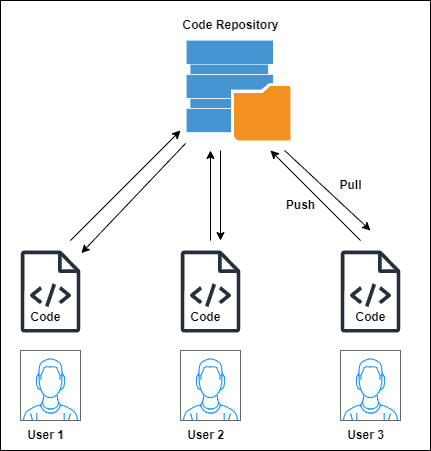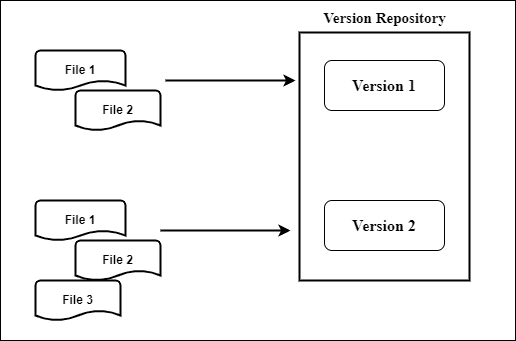1. Introduction
In this tutorial, we’ll talk about repositories and services and explain their differences.
We’ll provide helpful tips and share best practices.
2. What’s a Repository?
In the context of software development, a repository can mean many things. Generally, it’s a centralized storage location that efficiently manages and organizes various digital assets, such as source code, documentation, libraries, data files, and more.
The repository is like a cloud-based folder containing a group of files. Repositories offer a range of functions, including the capability to add, delete, or modify files. They can also do versioning, tracking file details, and recording creation timestamps.
2.1. Data Repository
A data repository serves as a centralized storage location storing and managing various types of data that an application or organization utilizes. It can encompass databases, data warehouses, data lakes, or other storage solutions.
The importance of data repositories lies in facilitating data retrieval, analysis, reporting, and decision-making processes.
2.2. Code Repository
A code repository is the central storage for source code and related assets in a software project. It acts as a place to organize, store, and manage all the code files. They include documentation, configuration files, libraries, and other digital assets.
Code repositories, also called codebases, primarily contain source code files, scripts, and configuration files used to build and run the software application:

Individual developers (users) can push and pull their code to the code repository.
2.3. Document Repository
A document repository is a centralized location for storing and managing documents, files, and other digital assets.
It is often employed for document management, version control, and access management.
2.4. Version Control Repository
Version control and code repositories are related but serve different purposes and have distinct characteristics.
Version control repositories track source code and project asset changes, preserving a comprehensive history, including contributors, timestamps, and specific alterations. This history provides details on how our project is evolving.
These repositories are typically private and not directly accessible to end users or the public. They are organized based on a timeline of commits, with each commit representing a specific set of changes made to the codebase:

This image illustrates that File1 and File2 were initially saved in the repository as Version 1. Subsequently, File3 was added and saved as Version 2 in the repository.
Popular version control systems include Git and Subversion (SVN), Mercurial, and others.
As the name suggests, a code repository contains source code for a software project. It’s a type of version control repository and focuses solely on storing and managing the codebase of a software application.
3. Understanding Services
In software development, services organize and encapsulate various aspects of a software application’s functionalities.
Depending on the context and architecture, specific types of services can be defined to address particular concerns. This leads to identifying several common types of services in software development.
3.1. Web Services
Web services refer to a standardized way of enabling software applications to communicate and exchange data over the internet or a network. They are designed to allow interoperability between different software systems, regardless of the programming languages, platforms, or technologies they are built on.
Additionally, web services typically use standard communication protocols such as HTTP, HTTPS, SOAP (Simple Object Access Protocol), REST (Representational State Transfer), and JSON-RPC to facilitate data exchange between the service provider and consumer.
3.2. Microservices
Microservices represent an architectural style that partitions an application into discrete, autonomously deployable services.
Each microservice assumes responsibility for a well-defined business function and communicates with other services through well-defined APIs.
3.3. Infrastructure Services
They are computing resources and components for operating and managing software applications and systems. These services are responsible for provisioning, maintaining, and optimizing the underlying infrastructure that supports the deployment and execution of software applications.
Infrastructure services are a critical part of modern IT environments, enabling teams to focus on software development without dealing with the infrastructure details and issues.
4. Key Differences Between a Repository and a Service
Repositories and services are fundamental concepts in software development, especially when designing scalable and maintainable applications. However, they have different roles.
4.1. Purpose
Repositories primarily handle data storage and retrieval, encapsulating the data access layer of an application to offer a structured interface for interacting with a database or data store.
In contrast, services encapsulate business logic and application-specific functionalities, orchestrating various operations and interacting with multiple repositories and other services to fulfill specific use cases.
4.2. Responsibilities
Repositories primarily concentrate on CRUD operations concerning data, encompassing tasks related to data storage, retrieval, and basic transformations. Their purpose is abstracting database interactions.
On the other hand, services encapsulate application-specific logic and processes, effectively coordinating various components, including repositories, to execute intricate operations and enforce business rules.
4.3. Abstraction Level
Repositories operate at a lower level of abstraction, directly handling database tables, records, and queries, and are often responsible for mapping data between the application and the database.
In contrast, services operate at a higher level of abstraction, offering a meaningful API for the application’s business logic. They can be composed of multiple other services and use more than one repository.
4.4. Scalability
Repositories typically prioritize data access and are less concerned with scalability, frequently utilized as-is across multiple application sections.
In contrast, services are purposefully designed with scalability in mind, making it possible to distribute them and allowing individual services to be scaled independently to manage varying workloads.
5. Summary
Here’s a quick summary of the main differences between repositories and services:
Repository
Service
Responsible for data storage and retrieval.
It provides business logic and application-specific functionalities.
Typically, it deals with raw data from the database without significant transformation.
Can transform and manipulate data as needed for application requirements.
Testing often involves integration tests to ensure correct database interactions.
Easier to test in isolation using unit tests, mocking dependencies like repositories.
Primarily deals with database-related errors.
Handles application-level errors and exceptions, providing meaningful responses to clients.
Mainly concerned with data security and access control.
Enforces business logic and security policies specific to the application.
6. Conclusion
In this article, we discussed the differences between a repository and a service. A repository is responsible for data storage and retrieval, whereas services provide business logic and application-specific functionalities.